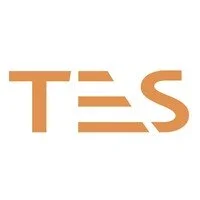Rail Defect Rectification
Maintaining the enduring integrity and performance of our railway infrastructure is a continuous and essential mission for us. On the Anglia Route, TES has been commissioned by Network Rail's Romford Maintenance Delivery Unit (DU) to carry out a comprehensive package of critical rail defect rectification works, forming a key part of ongoing efforts to enhance the network's resilience.
The Challenge: Sustaining Rail Integrity
The railway system's reliability hinges on the condition of its tracks. Rail degradation, if left unaddressed, poses risks to operational services and demands increased maintenance. This project focuses on the identification, removal, and replacement of compromised rail sections through the strategic installation of new Continuous Welded Rail (CWR). These interventions are meticulously planned to mitigate future failures, improve track geometry, and ensure the long-term resilience of the network for current and future traffic demands.
Our commitment extends beyond just completing the work; we strive to deliver safe, efficient, and socially responsible infrastructure improvements. As Principal Contractor for the Romford Maintenance DU, TES embraces its Health & Safety, Quality, and Environmental responsibilities, seeking every opportunity to deliver lasting value to the communities we serve.
Preparation Prowess: An Audit-Ready Approach
Demonstrating our commitment to safety, quality, and environmental standards, TES proactively compiled and submitted a comprehensive suite of documentation prior to the scheduled site audit. This pre-submission ensured full transparency and underscored our operational readiness and compliance with Network Rail’s governance and our Principal Contractors Licence requirements.
Our detailed documentation pack included:
Construction Phase Plan (CPP): Outlining our robust approach to managing health, safety, and environmental risks in alignment with CDM 2015 regulations.
Work Package Plans (WPPs): Detailed plans for all tasks, including safety-critical activities for rail defect rectification and CWR installation.
Task Briefings: Role-specific briefings for all operatives and site supervisors, ensuring clarity on responsibilities, safe systems of work, and emergency arrangements.
Site Induction Materials: Covering site rules, emergency procedures, hazard awareness, PPE requirements, fatigue management protocols, inclusion and welfare facilities, and Sentinel verification.
Risk Assessments: Site-specific assessments addressing potential hazards, including the manual handling of rail components, the use of Permaquip Ironmen, and thermal cutting/welding operations.
Quality Management Plan (QMP): A structured framework detailing TES’s procedures for assuring workmanship, inspection routines, materials traceability, and compliance with Network Rail’s quality standards.
Environmental and Social Risk Assessments: Demonstrating our strategy for mitigating ecological impacts and maximising social value through responsible worksite management and community engagement.
Training & Competence Records: Evidence of staff competencies (e.g., PTS, COSS, SMTH, OHL, specialist welding certifications), ensuring all personnel met required safety thresholds.
Plant & Equipment Certifications: Inspection logs and calibration records for lifting aids and Permaquip Ironmen, validating their safety and suitability for operational use.
This thorough site setup ensured a safe, inclusive, and efficient environment for project delivery, reinforcing TES’s commitment to health, sustainability, and respect for its workforce.
The Works in Action: Precision and Performance
The core of the project involves the precise identification, removal, and replacement of defective rail sections, with a focus on installing new Continuous Welded Rail (CWR) across selected track locations. These interventions are strategically planned to address existing rail degradation, mitigate the risk of future failures, and ensure the long-term resilience of the network. All activities are being executed in accordance with Network Rail standards and safety protocols, with a particular emphasis on minimising disruption to operational services. The rectification works aim to deliver significant improvements in track geometry, ride quality, and overall operational performance.
By replacing compromised rail with modern CWR, the project supports enhanced track stability, reduced maintenance requirements, and increased safety for both rail services and trackside personnel. Ultimately, these works contribute to the broader objective of maintaining a reliable, safe, and efficient railway system that meets the demands of current and future traffic.
Independent Verification: The Network Rail Site Audit
As part of our Principal Contractor responsibilities under Network Rail’s rigorous governance framework, TES underwent a comprehensive site audit at Southend Victoria. The audit, conducted over a 6-hour period by an appointed Network Rail Auditor, aimed to assess our compliance against the exacting standards required for holding and maintaining a Principal Contractors Licence (PCL).
Key audit components included:
Documentation Review: The auditor thoroughly examined all pre-submitted documentation, including the Construction Phase Plan, Work Package Plans, Quality Management Plan, and environmental/social risk controls. Our documentation demonstrated strong alignment with Network Rail protocols and CDM 2015 regulations, confirming that all aspects of the works had been robustly planned and controlled.
Site Walkout & Observations: A structured walkout of the worksite was undertaken to verify that on-site conditions precisely reflected the documented controls. This included checks on fencing, eco lighting installations, safe access routes, welfare provision, and the effective use of Permaquip Ironmen for manual handling and welding activities. Operational signage, fire points, first aid arrangements, and housekeeping standards were also meticulously reviewed.
Engagement with Site Team: The auditor held direct discussions with key site personnel, including the Site Manager, COSS, and Safety Representatives. Particular focus was placed on their understanding of roles and responsibilities, knowledge of safe systems of work, training, competencies, fatigue management, incident response, and emergency preparedness.
Audit Outcome: Reinforcing Excellence
The audit concluded with a resoundingly positive outcome. The Auditor specifically noted TES’s proactive approach to risk management, clear site organisation, and high standards of welfare and inclusion. Crucially, the company’s documentation and operational delivery were found to be consistent with the expectations of a licensed Principal Contractor operating under Network Rail governance.
This successful audit reinforced TES 2000 Ltd’s reputation for delivering high-quality infrastructure works within a structured and compliant project framework, further solidifying our position as a trusted partner in maintaining and enhancing the UK's rail network.
